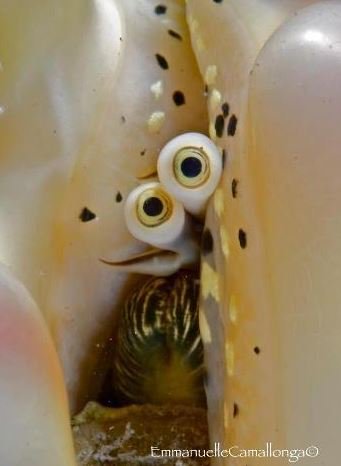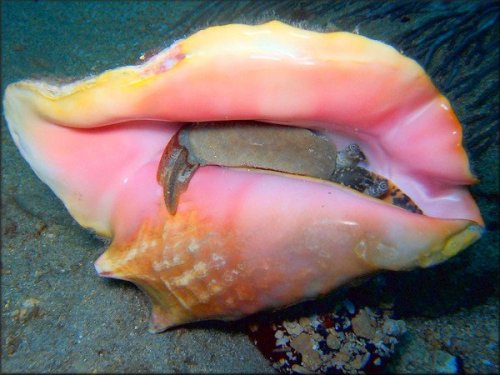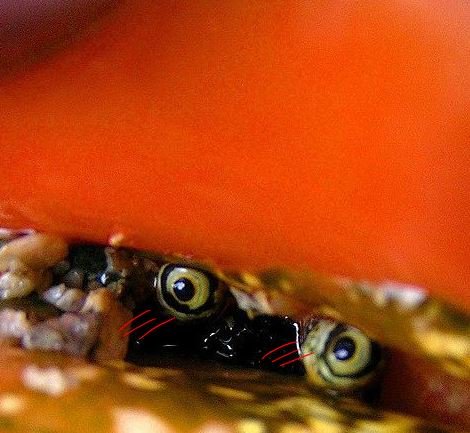The Fact That "Last Jew/One Of Last Remaining Jews" In A Specific Geographic Location Is A Type Of Profile
the fact that "Last Jew/One Of Last Remaining Jews" in a specific geographic location is a type of profile unto itself sure is something.
like. think about that for a second. it is SUCH a frequent occurrence that Jews are driven out of places until there's none left/only a handful left that someone can say "i swear every time they profile one of the last remaining jews anywhere they are always A Character in true jewish fashion" and no one even blinks at that. just. i'm tired
(this is the post I'm referencing. OP's tags made clear she wanted it to be a spot of Jewish joy and I want to respect that so I made my own post to be sad and a downer. and the man in question sounds lovely. But then I started thinking about how common it is for there to be The Last Jew in any given locale and grief hit me.)
More Posts from Greencheekconure27primary and Others










Today we learned that conches, the sea-dwelling mollusks who live inside those big, beautiful conch seashells in warm tropical waters, peer out at the world with cartoonish eyes on tiny eyestalks. They see you. They see everything. And what’s more, they can regenerate their peepers should they happen to lose one or both of them.
“One 1976 paper dug into the specific behind these animals’ alien eyestalks. Sitting at the tips of long stalks, they contain retinas with both sensory cells and colored pigment cells. But the story gets weirder because obviously, it gets weirder. After amputating the conchs’ eyes, a fully-formed replacement took its place 14 days later. Humans, we really are losing this evolutionary game.”
But wait, that’s hardly the only surprising set of eyes under the sea. Scallops have eyes too, LOTS of them:


Conch photos by Redditor buterbetterbater and via @shingworks.
[via /r/pics and Gizmodo]
reblog if you ARE JEWISH, if you SUPPORT JEWISH PEOPLE, or if you WANT ALL NEONAZIS TO BE CARRIED OFF BY MOTHMAN
Go to my other blog
There’s nothing here. Go to https://www.tumblr.com/blog/greencheekconure27

Americans throw away almost as much food as they eat because of a “cult of perfection”, deepening hunger and poverty, and inflicting a heavy toll on the environment. By one government tally, about 60m tonnes of produce worth about $160bn (£119bn), is wasted by retailers and consumers every year - one third of all foodstuffs.
But that is just a “downstream” measure. In more than two dozen interviews, farmers, packers, wholesalers, truckers, food academics and campaigners described the waste that occurs “upstream”: scarred vegetables regularly abandoned in the field to save the expense and labour involved in harvest. Or left to rot in a warehouse because of minor blemishes that do not necessarily affect freshness or quality.
When added to the retail waste, it takes the amount of food lost close to half of all produce grown, experts say.
Retail giants argue that they are operating in consumers’ best interests, according to food experts. “A lot of the waste is happening further up the food chain and often on behalf of consumers, based on the perception of what those consumers want,” said Roni Neff, the director of the food system environmental sustainability and public health programme at the Johns Hopkins Center for a Livable Future in Baltimore.
“Fruit and vegetables are often culled out because they think nobody would buy them,” she said.
But Roger Gordon, who founded the Food Cowboy startup to rescue and re-route rejected produce, believes that the waste is built into the economics of food production. Fresh produce accounts for 15% of supermarket profits, he argued.
“If you and I reduced fresh produce waste by 50% like [the US agriculture secretary] Vilsack wants us to do, then supermarkets would go from [a] 1.5% profit margin to 0.7%,” he said. “And if we were to lose 50% of consumer waste, then we would lose about $250bn in economic activity that would go away.”
The farmers and truckers interviewed said they had seen their produce rejected on flimsy grounds, but decided against challenging the ruling with the US department of agriculture’s dispute mechanism for fear of being boycotted by powerful supermarket giants. They also asked that their names not be used.
“I can tell you for a fact that I have delivered products to supermarkets that was [sic] absolutely gorgeous and because their sales were slow, the last two days they didn’t take my product and they sent it back to me,” said the owner of a mid-size east coast trucking company.
“They will dig through 50 cases to find one bad head of lettuce and say: ‘I am not taking your lettuce when that lettuce would pass a USDA inspection.’ But as the farmer told you, there is nothing you can do, because if you use the Paca [Perishable Agricultural Commodities Act of 1930] on them, they are never going to buy from you again. “Are you going to jeopardise $5m in sales over an $8,000 load?”
Massive food waste is based into capitalist agriculture. If the vast majority of the food produced in America’s farms was brought to market, it would drive prices down rapidly, threatening the profits of retailers. Less than 1% of this surplus food ever reaches the mouths of the hungry.
Orange ball!! ORANGE BALL!!
My favorite version so far.Beautiful music,obviosly, but also beautifully acted and staged.The “messenger”part actually made me cry in class ,something I haven’t done since I was 14.
Monteverdi’s l'Orfeo, conducted by Jordi Savall, performed by Le Concert des Nations, La Capella Reial de Catalunya, and soloists.
I am so fond of this version, from the elegant set to the instrumentalists (crisp and full of vigour) to the warm and frankly imperfect singing. But what really makes it is Mr Savall’s entrance. The drums and brass start playing, and there he goes, striding down to the pit in his billowing robes. Jordi, you magnificent bastard!
Reblog if you think the person you reblogged this from deserves to be happy.
Reblog if Black Lives Matter to you
Where are those woke white people at!?
actually THIS is my new favorite doesthedogdie comment

-
 parme-tan reblogged this · 2 weeks ago
parme-tan reblogged this · 2 weeks ago -
 vamptastic liked this · 2 weeks ago
vamptastic liked this · 2 weeks ago -
 gaytransdragon liked this · 2 weeks ago
gaytransdragon liked this · 2 weeks ago -
 groovy-lady reblogged this · 3 weeks ago
groovy-lady reblogged this · 3 weeks ago -
 groovy-lady liked this · 3 weeks ago
groovy-lady liked this · 3 weeks ago -
 adiradirim liked this · 3 weeks ago
adiradirim liked this · 3 weeks ago -
 hypotheticlyweird liked this · 3 weeks ago
hypotheticlyweird liked this · 3 weeks ago -
 amillionmagpies liked this · 3 weeks ago
amillionmagpies liked this · 3 weeks ago -
 hatikva-shalom liked this · 3 weeks ago
hatikva-shalom liked this · 3 weeks ago -
 rosie-b reblogged this · 3 weeks ago
rosie-b reblogged this · 3 weeks ago -
 rosie-b liked this · 3 weeks ago
rosie-b liked this · 3 weeks ago -
 r4incl0uds liked this · 3 weeks ago
r4incl0uds liked this · 3 weeks ago -
 roguelibrarian liked this · 3 weeks ago
roguelibrarian liked this · 3 weeks ago -
 dayalloused reblogged this · 3 weeks ago
dayalloused reblogged this · 3 weeks ago -
 sprnja reblogged this · 3 weeks ago
sprnja reblogged this · 3 weeks ago -
 earlymodernlesbian liked this · 3 weeks ago
earlymodernlesbian liked this · 3 weeks ago -
 tobyfoxmademeascaly liked this · 3 weeks ago
tobyfoxmademeascaly liked this · 3 weeks ago -
 cursedpupperino liked this · 3 weeks ago
cursedpupperino liked this · 3 weeks ago -
 knight-of-skyloft liked this · 3 weeks ago
knight-of-skyloft liked this · 3 weeks ago -
 gingerswagfreckles reblogged this · 3 weeks ago
gingerswagfreckles reblogged this · 3 weeks ago -
 gingerswagfreckles liked this · 3 weeks ago
gingerswagfreckles liked this · 3 weeks ago -
 prepare-to-daae reblogged this · 3 weeks ago
prepare-to-daae reblogged this · 3 weeks ago -
 ncah-czerny liked this · 1 month ago
ncah-czerny liked this · 1 month ago -
 ladyimaginarium reblogged this · 1 month ago
ladyimaginarium reblogged this · 1 month ago -
 badgermcghee liked this · 1 month ago
badgermcghee liked this · 1 month ago -
 aif0s-w liked this · 1 month ago
aif0s-w liked this · 1 month ago -
 galateaunloved liked this · 1 month ago
galateaunloved liked this · 1 month ago -
 mossadspydolphin reblogged this · 1 month ago
mossadspydolphin reblogged this · 1 month ago -
 salvadorbonaparte liked this · 1 month ago
salvadorbonaparte liked this · 1 month ago -
 jeweled-weevil reblogged this · 1 month ago
jeweled-weevil reblogged this · 1 month ago -
 girlwithsword reblogged this · 1 month ago
girlwithsword reblogged this · 1 month ago -
 thesaltiessaltandvinegarchip liked this · 1 month ago
thesaltiessaltandvinegarchip liked this · 1 month ago -
 kvetchbin-9000 reblogged this · 1 month ago
kvetchbin-9000 reblogged this · 1 month ago -
 thefandomwarriorlexy liked this · 2 months ago
thefandomwarriorlexy liked this · 2 months ago -
 dragoneyes618 reblogged this · 2 months ago
dragoneyes618 reblogged this · 2 months ago -
 winterjoy211 reblogged this · 2 months ago
winterjoy211 reblogged this · 2 months ago -
 winterjoy211 reblogged this · 2 months ago
winterjoy211 reblogged this · 2 months ago -
 tripleness reblogged this · 2 months ago
tripleness reblogged this · 2 months ago -
 seanchai-lieb liked this · 2 months ago
seanchai-lieb liked this · 2 months ago -
 magic-coffee liked this · 2 months ago
magic-coffee liked this · 2 months ago -
 torc87 reblogged this · 2 months ago
torc87 reblogged this · 2 months ago -
 torc87 liked this · 2 months ago
torc87 liked this · 2 months ago -
 littledoggy-girlcollar liked this · 2 months ago
littledoggy-girlcollar liked this · 2 months ago -
 forlovefromfear reblogged this · 2 months ago
forlovefromfear reblogged this · 2 months ago -
 chanaleah reblogged this · 2 months ago
chanaleah reblogged this · 2 months ago -
 sweeterrthanfiction liked this · 2 months ago
sweeterrthanfiction liked this · 2 months ago -
 heavenssexiestangel liked this · 2 months ago
heavenssexiestangel liked this · 2 months ago -
 adoratato reblogged this · 2 months ago
adoratato reblogged this · 2 months ago -
 tikkunolamresistance reblogged this · 2 months ago
tikkunolamresistance reblogged this · 2 months ago -
 unstark reblogged this · 2 months ago
unstark reblogged this · 2 months ago

94 posts
